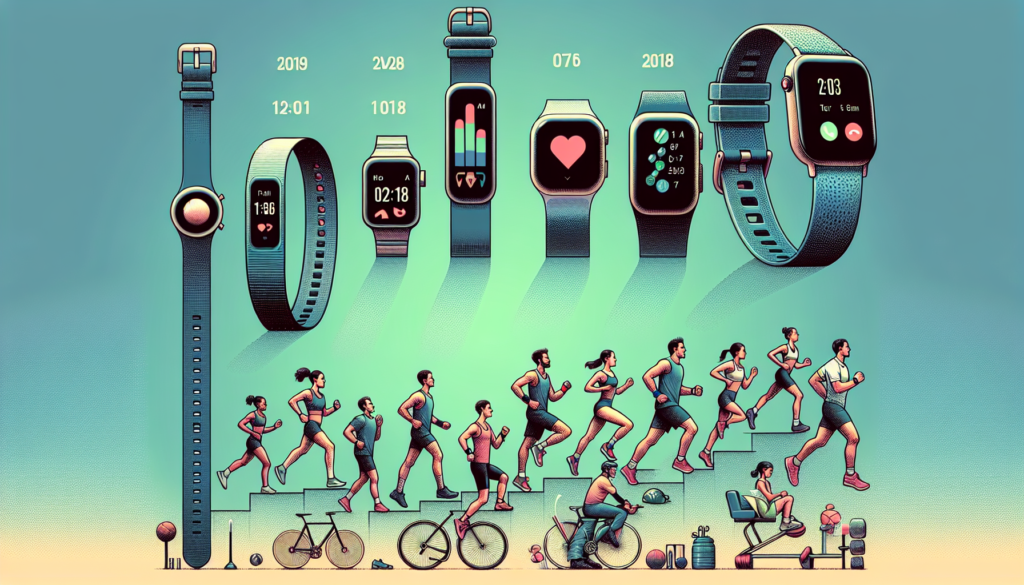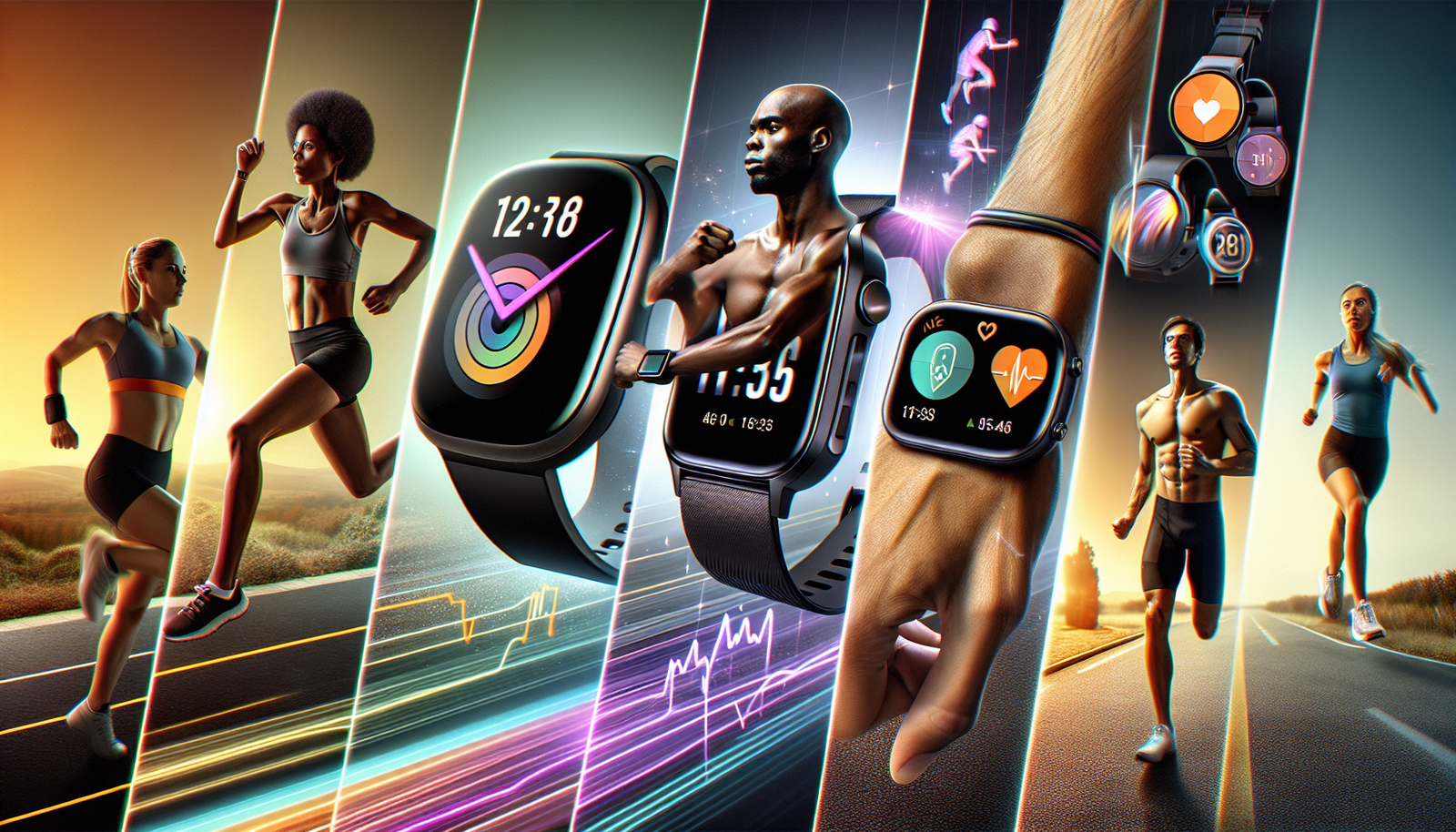From humble beginnings as simple fitness trackers to now becoming essential tools for athletes and active individuals, sports smartwatches have come a long way in their evolution. These incredible devices not only track your steps and heart rate, but also provide valuable insights into your performance, monitor your sleep patterns, and even allow you to stay connected on the go. With a wide range of options available, it can be overwhelming to choose the right sports smartwatch for your needs. Fear not, as this article will guide you through the evolution of sports smartwatches, highlighting their advantages and helping you make an informed purchasing decision.
The Evolution of Best Sports Smartwatches
Introduction to Sports Smartwatches
Sports smartwatches have revolutionized the way we track and monitor our fitness and performance. These technologically advanced timepieces are designed specifically for athletes and fitness enthusiasts, offering a range of features and capabilities to enhance their training and overall well-being.
1. Early Sports Smartwatches
Definition and features
Early sports smartwatches were the pioneers of the wearable technology industry, blending the functionality of traditional watches with cutting-edge technology. These devices were equipped with basic fitness tracking capabilities, such as step counting and calorie tracking. While their features were limited compared to the smartwatches of today, they laid the foundation for the advancements we now enjoy.
Limited functionality
In their early stages, sports smartwatches had limited functionality, mainly focusing on basic fitness tracking. They could track steps taken, distance covered, and calories burned, providing users with essential data to monitor their daily activity levels. However, they lacked the more sophisticated features that we now associate with sports smartwatches, such as GPS and heart rate monitoring.
Compatibility with smartphones
Early sports smartwatches relied heavily on smartphones for data synchronization and connectivity. They needed to be paired with a compatible smartphone to access their full range of features, making them more of an accessory rather than independent devices. This limited their usage and convenience, as users had to carry their smartphones with them during their workouts.

2. Key Advancements in Sports Smartwatches
Built-in GPS technology
One of the most significant advancements in sports smartwatches was the introduction of built-in GPS technology. This feature eliminated the need for users to carry their smartphones during outdoor activities, as the smartwatch itself could accurately track and map their routes. With GPS capabilities, athletes could analyze their running or cycling routes, monitor their pace, and accurately calculate their distance covered.
Heart rate monitoring
Heart rate monitoring became a game-changer in sports smartwatches, enabling users to track their heart rate in real-time. This feature provided essential insights into their cardiovascular health and helped optimize their training intensity. With the ability to monitor heart rate during different activities, users could tailor their workouts to achieve their fitness goals more effectively.
Water resistance and swim tracking
Sports smartwatches also saw advancements in water resistance and swim tracking capabilities. Originally designed for tracking land-based activities, these watches evolved to withstand water exposure, making them suitable for swimming and water-based sports. They could accurately track swim distance, laps, and strokes, providing valuable data to swimmers to improve their technique and performance.
Advanced fitness tracking capabilities
As technology advanced, sports smartwatches expanded their fitness tracking capabilities beyond basic step counting. These devices began incorporating more sophisticated sensors and algorithms to track activities such as running, cycling, hiking, and even specialized sports like golf or tennis. They provided detailed metrics including pace, elevation, cadence, and even swing analysis, empowering athletes to fine-tune their training and improve their overall performance.
3. Integration with Sports Performance Analysis
Introduction to sports performance analysis
Sports performance analysis involves the collection and interpretation of data to evaluate and improve an athlete’s performance. Integrating this concept into sports smartwatches opened up a whole new world of possibilities. With real-time data tracking and analysis, athletes could gain valuable insights into their performance and make informed decisions to enhance their training strategies.
Sensor technology in sports smartwatches
Sports smartwatches utilize advanced sensor technology to collect and measure data during various activities. These sensors include accelerometers, gyroscopes, compasses, and altimeters, among others. These sensors work in harmony to track movements, record positions, and measure other physical variables to provide athletes with valuable data for detailed performance analysis.
Real-time data tracking
Real-time data tracking is a crucial feature in sports smartwatches. It allows athletes to monitor their performance metrics, such as speed, distance, heart rate, and even oxygen saturation levels, in real-time during their workouts or competitions. This immediate feedback enables them to make instant adjustments to their intensity or technique, optimizing their performance and minimizing the risk of injuries.
Improved training and performance
With the integration of sports performance analysis, athletes can tailor their training programs more effectively. By analyzing and understanding their data, they can identify strengths, weaknesses, and areas for improvement. This knowledge enables them to focus on specific aspects of their training, target their efforts where it matters most, and ultimately enhance their overall performance.

4. Customization and Personalization
Interchangeable straps and design options
Sports smartwatches have become highly customizable, allowing users to express their personal style and preferences. One popular feature is interchangeable straps, which can be easily swapped to match different outfits or activities. Additionally, manufacturers offer a wide variety of design options, ensuring that users can find a watch that suits their individual taste and aesthetic preferences.
Personalized fitness goals
Another aspect of customization is the ability to set personalized fitness goals. Sports smartwatches enable users to establish targets for steps, calories burned, distance covered, and more. This feature helps individuals stay motivated and track their progress, ultimately leading to better adherence to their fitness routine and improved overall well-being.
Connected apps and services
Sports smartwatches can be seamlessly connected to a range of fitness and health apps, providing users with a comprehensive ecosystem for managing their fitness journey. These apps often offer additional features such as nutrition tracking, sleep analysis, and guided workouts. The integration of these services enhances the overall user experience and makes sports smartwatches a valuable tool in achieving fitness and wellness goals.
5. Enhanced Communication and Notifications
Call and message notifications
Sports smartwatches have evolved to include call and message notifications, keeping users connected even during their workouts. With a quick glance at their wrist, athletes can check incoming calls, text messages, and app notifications, all without interrupting their activities. This feature ensures that users never miss an important message while staying focused on their training.
Social media integration
Many sports smartwatches now offer social media integration, allowing users to receive notifications and updates from their favorite platforms. Athletes can share their workout achievements, progress, or even race results directly from their smartwatches. This integration fosters a sense of community and enables users to stay connected with like-minded individuals, providing additional motivation and support.
Advanced communication features
Some sports smartwatches even go beyond basic call or message notifications, offering advanced communication features. These watches allow users to respond to messages and calls directly from their wrists, either through preset replies, voice dictation, or even by accepting or declining calls. This seamless connectivity streamlines communication, allowing athletes to stay focused on their activities without the need to reach for their smartphones.
6. Battery Life and Charging Capabilities
Improved battery life
Battery life has always been a crucial aspect of smartwatches, and sports smartwatches are no exception. Manufacturers have made significant strides in optimizing power consumption, resulting in improved battery life. Athletes can now rely on their devices throughout the day, knowing that they won’t run out of power during their workouts or outdoor adventures.
Wireless charging options
The convenience of wireless charging has also made its way into sports smartwatches. Users can now simply place their watches on a charging pad or dock, eliminating the hassle of dealing with bulky charging cables. This feature adds an extra layer of convenience and makes it easier than ever to keep sports smartwatches topped up and ready for action.
Power-saving modes
To further enhance battery life, sports smartwatches often come equipped with power-saving modes. These modes allow users to conserve battery by disabling certain features or reducing the device’s functionality temporarily. By activating power-saving modes, athletes can extend the usage time of their watches, ensuring they won’t be left without essential data during their longest training sessions.
7. Smartwatch Ecosystem and Compatibility
Compatibility with different operating systems
Sports smartwatches are designed to be compatible with various operating systems, including iOS and Android. This compatibility ensures that users can seamlessly integrate their smartwatches with their existing devices, regardless of their preferred platform. Athletes enjoy the flexibility of choosing a watch that best suits their needs and preferences without worrying about compatibility issues.
Integration with other smart devices
Sports smartwatches are not standalone devices; they are part of a broader smartwatch ecosystem. These watches can seamlessly connect and interact with other smart devices, such as smartphones, tablets, and even smart home devices. This interconnectedness provides users with a unified experience, allowing them to control various aspects of their lives from their wrists.
Third-party app ecosystem
The availability of a thriving third-party app ecosystem is another significant advantage of sports smartwatches. These watches offer access to a wide range of apps developed by third-party developers, allowing users to extend the functionality of their devices. Whether it’s accessing specialized fitness apps, music streaming services, or productivity tools, the third-party app ecosystem enhances the versatility and usefulness of sports smartwatches.
8. Popular Sports Smartwatch Brands
Apple Watch
Undoubtedly one of the most recognizable and dominant players in the smartwatch industry, the Apple Watch has also established itself as a leader in the sports smartwatch market. With its robust features, extensive app ecosystem, and seamless integration with other Apple devices, the Apple Watch has become a top choice for athletes and fitness enthusiasts.
Samsung Galaxy Watch
Samsung has made a name for itself in the sports smartwatch industry with its Galaxy Watch series. These watches combine stylish design with a plethora of fitness tracking features, making them highly sought after by active individuals. Additionally, the Galaxy Watch offers compatibility with both Android and iOS devices, providing users with the flexibility to choose their preferred ecosystem.
Garmin Forerunner
Garmin is renowned for its expertise in GPS technology and sports-focused wearables, and the Forerunner series reflects this expertise. The Forerunner watches are specifically designed for runners, offering advanced performance metrics and training features. With their accurate GPS tracking, robust battery life, and durable build, the Garmin Forerunner watches are a popular choice among serious athletes.
Fitbit Versa
Fitbit revolutionized the wearable fitness tracker market, and the Fitbit Versa is the brand’s entry into the sports smartwatch realm. Combining fitness tracking capabilities with smartwatch features, the Fitbit Versa offers a balance between functionality and affordability. Its user-friendly interface, extensive exercise tracking options, and sleep analysis make it an appealing choice for individuals looking to improve their overall health and fitness.
10. Future Trends in Sports Smartwatches
Integration of artificial intelligence
As smartwatches continue to advance, the integration of artificial intelligence (AI) is becoming more prominent. AI can analyze data gathered by sports smartwatches to provide personalized recommendations, training plans, and performance insights. With AI-powered features, sports smartwatches will empower athletes to make data-driven decisions and achieve their goals more efficiently.
Expanded health monitoring capabilities
Health monitoring will be a key focus in the future evolution of sports smartwatches. In addition to tracking basic fitness metrics, these devices will likely expand their capabilities to monitor various health parameters such as blood oxygen levels, skin temperature, and even stress levels. This holistic approach to monitoring health will offer users a comprehensive picture of their well-being, enabling them to prioritize self-care and make informed decisions about their training.
Improved durability and ruggedness
Sports smartwatches will continue to become more durable and rugged, catering to the specific needs of athletes engaging in intense activities. With enhanced shock resistance, water resistance, and rugged casing, these watches will be able to withstand even the harshest environments. This increased durability will provide athletes with peace of mind, knowing that their smartwatches can handle the demands of their athletic pursuits.
Advancements in display technology
Display technology in sports smartwatches will continue to improve, offering better visibility and readability in various lighting conditions. This includes advancements in color accuracy, brightness, and resolution. The incorporation of more advanced display technologies, such as OLED and AMOLED, will enhance the visual experience, making it easier for athletes to read their data and navigate through their watch’s interface.
In conclusion, sports smartwatches have come a long way since their early days. From basic fitness tracking to advanced performance analysis and communication features, these watches have transformed the way athletes train, monitor their progress, and stay connected. With ongoing advancements and ever-evolving technology, the future of sports smartwatches holds even more promise, pushing the boundaries of what these devices can achieve in the world of fitness and sports. So whether you’re a professional athlete, a casual fitness enthusiast, or someone simply looking to improve their health, a sports smartwatch can be your companion on the journey towards a fitter, healthier, and more productive you.

